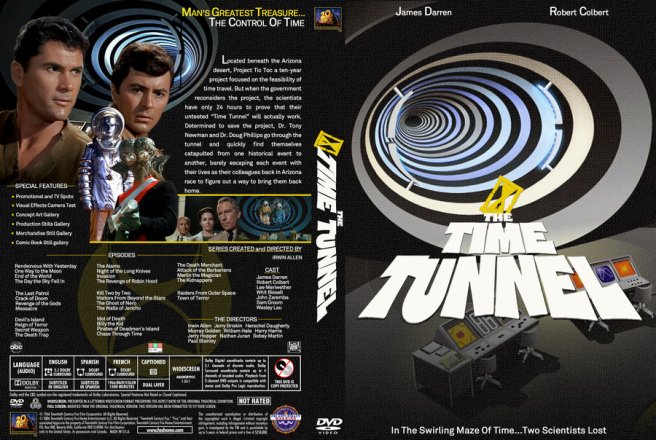I’m not sure how old I was when I first watched Dr Who, however I recall that it first screened in black and white and was televised at about 6:00 p.m on Sundays. I can’t imagine I was allowed to watch it in 1963 when it was first aired as I was only three, however I know my brother and I would rendezvous every week in the television room (a converted study) and wait for the legendary Dr Who theme music to start. The words DR WHO would slowly materialise on screen created by some sort of techno-funky effects and in that moment, I was hooked! I’m sure it was Dr Who that began my predilection for sci-fi and I became a big fan of the genre including Star Trek and The Time Tunnel. I didn’t question how the DR could hop into a telephone box and travel through time – i just accepted it. I also accepted the notion that the Tardis was way bigger on the inside than it appeared from the outside. In 1964 Marshall McCluhan wrote
Today we have extended our central nervous system itself in a global embrace, abolishing both space and time as far as our planet is concerned
Paul Booth (2013) cites Richard Walsh stating “that time travel in fiction offers a useful way of renegotiating […] the complex relations between narration and fictional representation”. He goes on to say that “[t]hrough these relations, audiences take meaning from narratives and apply it to our own lives to learn about and discover aspects of their selves […] Narrative both offers meaning and allows audiences to create meaning”. Exactly what I was thinking when I was six! Time travel is used as a “narrative device hold[ing] together the web of unstable elements”. The Tardis is a black box representing the machinations of time travel. The Doctor and his companions hop in the Tardis, dial up a time portal and the strange sounds that are recognised globally as the de/materialisation of the Tardis begin and ‘voila’ we are transported to a new time zone. The beauty of using the Tardis as an vehicle to access time portals is that there is no need for complex explanations. It is the Tardis and that is what it does!
‘the paradox at the heart(s) of Doctor Who functions as an aesthetic and textual attempt to illustrate a quotidian existence within a networked culture’. Paul Booth (2013)
It brings meaning to the way in which we interact with technology, how we consume it and equally, how it consumes us!
Our utopian selves envision us zooming around the universe, in and out of the fourth dimension and back in time for dinner but what is the reality?
Imagination is a powerful tool which periodically has acted as a catalyst for the creation and development of new technologies however, not all of our imaginings are realised. This utopian perspective is constantly being head-butted by the dystopian which has its feet planted firmly in the ‘that will never happen camp’. However diametrically opposed, these viewpoints are inescapably interwoven by the web of the internet and the resulting networked culture that has grown from this tension has become known as Cyberculture.
Cyberculture is a way of thinking about how people and digital technologies interact, how we live together – David Bell (2007)
Science Fiction narratives are not the only way we experience time travel in our hyper-mediated technological cyber societies. Social media platforms provide us with digital time portals effecting ready access to our past and present selves, as well as linking us globally to other users. Manual Castells, a Spanish sociologist, theorises about many aspects of ‘network society’ and describes our techno environments as ‘a space of flows and timeless times‘. Desequencing was coined by Castells as the way in which time can be reordered and archived via a myriad of filters and by any number of network users. It is almost as if time is cut from its own contextual framework and then pasted into one constructed by the user.
This brings me to the point of discussion of my digital artifact which will be a series of vlogs produced around the notion of modern ‘time travel’ and how we have harnessed technology to become Time Lords of our own digitised worlds. I chose Vlogging (video + blogging) as the digital medium for this project as a vlog is an effective and easily accessible way to deliver information. Its popularity as a medium is well documented and if you are very good, there is an opportunity for fame and fortune! I am planning to produce a minimum of six vlogs covering the topics of time travel narratives, both written and on screen, social media and time travel, possibilities of realising time travel from a scientific perspective, cyberculture theory and time travel, fandom and time travel and perhaps an episode about my favourite time travel programs. This is a list that is subject to change as I ‘bravely go where no [wo]man has gone before’ and adapt and create in response to my research.
Resources:
Booth, P 2013, ‘Effecting the Cause: Time Travel Narratives’, in GI Leitch (ed.), Doctor Who In Time and Space: Essays on Themes, Characters, History and Fandom, 1963-2012, McFarland & Company Inc, North Carolina, pp. 97-111.
Gleick, J (2016) Is Time Travel Possible? Only Since 1895, Available at: http://bigthink.com/videos/james-gleick-on-hg-wells-and-sci-fi-time-travel-evolution (Accessed: 21st June 2017).

Reblogged this on cybercultures blog and commented:
I invite all ‘digital time lords’ to read my first blog post for Cybercultures. Enjoy!